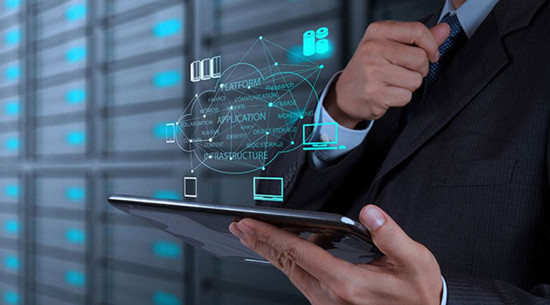How To Revive Dead 18650 Battery?-Cycle Life And Protection
Mar 19, 2020 Pageview:3264
The 18650 batteries are a type of lithium-ion batteries that are used for a wide range of electronic gadgets, from laptops, mobile phones to camcorders.
The benefits of lithium-ion batteries over NiCad batteries and NiMH batteries are higher limits, lower self-discharge, and a higher number of charge cycles before issues get created.
Before you discard a lithium-ion battery that seems to have lost its power, take steps to bring the battery life back.?Here are steps that you should follow to bring the battery to life again.
How do you bring a dead 18650 battery back to life?
Studying the battery life
The best way is to turn off the power source to the appliance containing your battery and removing the battery. Note the voltage reading with your voltmeter. Lithium-ion batteries will go into sleep mode if you drain the battery.
Using the appropriate charger
Some batteries chargers have a wake-up, recovery, or may have boost feature that is designed to wake up a sleeping battery. Meanwhile, you should know that the battery should have below 1.5 V. after that, insert the battery with taking care to add it.
Check the battery after a minute
You have to take another voltage reading of the battery after your battery being waked up. Mostly charging time is written on the manual so that you can refer it. If it doesn't work, then you have to buy a new battery.
Charge and Discharge the battery
After that return, the battery into the lithium-ion charger and charge it. It usually takes 3 hours, depending on the Li-on battery type.?
Some batteries will progress automatically from recovery mode to charging so that these devices will leave the battery in place throughout. The next step is to discharge the Li-on battery that is putting a heavy load on the battery.
Freeze the Battery
You have to seal the Li-on battery in an airtight bag and put it in the freezer for about 24 hours.?You have to ensure that there is no moisture in the bag, which could make the battery wet and damage it.
After you take it out of the freezer, draw it for up to eight hours to restore it to room temperature.
Charge the Battery
You have to place the Li-on battery in the charger and charge it fully. Doing this will improve the performance, and it will retake charge and last longer between charge cycles.?
How long can 18650 batteries die?
Lipo batteries have remarkable charge upkeep. At whatever point left for a period without use, there is practically no self-discharge over vast stretches, chiefly if the limit is temperature stable (inside express 10? to 25?C).?
This also applies to momentary capacity, as possibly might be the place batteries are charged 1 or 2 days before the flying gathering. If the size will be for months (perhaps over winter) by then, the condition of the packs is best obliged by setting the voltage to quick esteem.?
There may not be cautiously the specific reason behind this. Be that as it may, a voltage of around 60% of the empty/full range (say someplace in the scope of 3.6 and 3.8 volts) seems, by all accounts, to be great.
The remarks above on charging and discharging Lipo's show that the issue zones for these batteries are at the limitations of the voltage range, and it is steady with tolerating that limit voltage is best set at the mean estimation of this range.
Can you extend the 18650 battery's life?
Yes, you can extend the battery life of 18650. It is a lithium-ion cell made up of the size of 18mm x65 mm. Nowadays, it is used a lot in flashlights, laptops, and other high technological devices because of qualities like convenience and rechargeability.
Usually, the type of battery can be charged 500 times. However, if you don't use it properly, then it will be broken. Here are few five tips to extend the life of a 18650 battery:
1.Keeping all the batteries at room temperature:
Heat is one of the most significant factors that have a terrible influence on battery life. Usually, one should protect the 18650 cells that have a temperature between 20°C – 25°C in a dry room with moderated humidity levels.
The batteries should avoid contact with the direct sun to prevent overheating.
If your battery gets damaged by heat, then the capacity cannot be restored. That is what you should pay attention to the place you leave your device.
2.Avoid Frequent Full Discharge:
It would be best if you did not wait until your battery is fully discharged to recharge it again. Electronics experts recommend that a battery should be recharged after it gets down to 40 %.
The reasons are the lithium-ion charge prefers deep discharge. If you discharge a lithium-ion battery below 2.5volts, then the built-in safety circuit opens to stop the flow of charge.
The battery looks like it has no charge, and you cannot use the original charger. The only way to use a battery analyzer is that it features the boost function to recharge the unit.
3. Allow Partial Discharges:
Lithium-ion batteries don't have a charge memory, so deep charge cycles are not necessary.
Many people usually wait until the battery goes all the way down to zero, then recharge it to 100%.
It would be best if you didn't follow the above process since lithium batteries have a limited number of cycles where they can be fully charged and discharged.
If you reach beyond the limit, the battery life tends to decline. Therefore, instead of charging the device up to 100 %, you should fully charge it once a month.
Conclusion
The article gives you an idea to revive the batteries by following some theories that depend upon observing, charging, and maintaining temperature difference. Following all these theories, you can revive your battery.
Leave Message
Hottest Categories
-
Hottest Industry News
-
Latest Industry News














